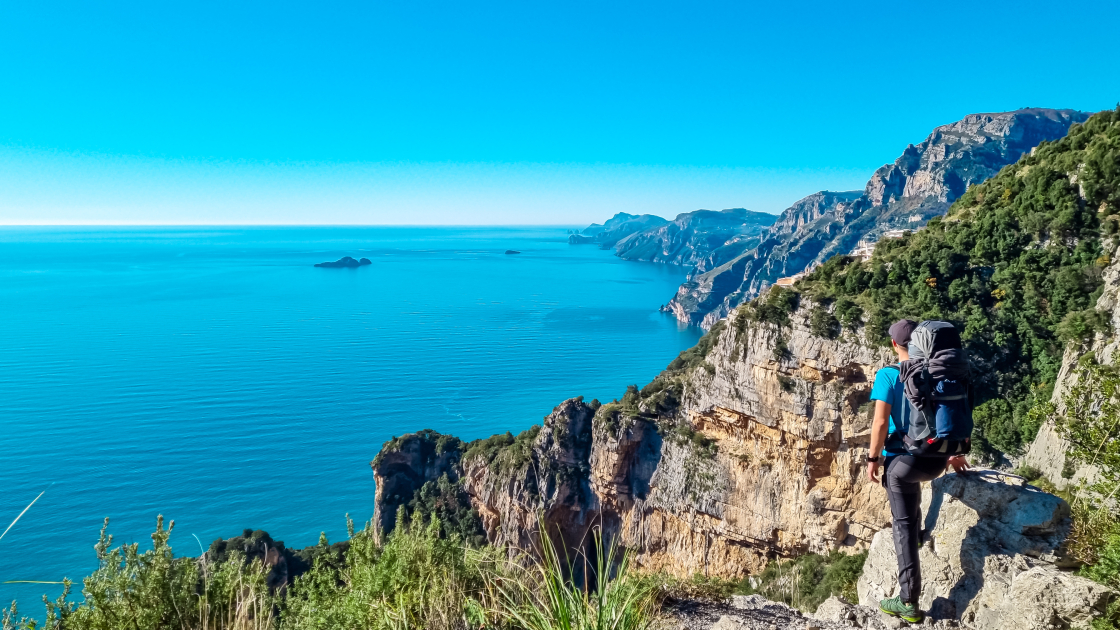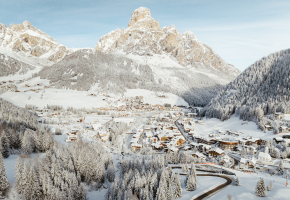
Undertourism
Learn how to experience the Amalfi Coast and Sorrento Peninsula in a smart way

The Amalfi Coast, a UNESCO World Heritage Site, is one of the most recognized places in the world. It stretches from the town of Positano to Vietri sul Mare, along the southern Tyrrhenian coast of Italy. Iconic towering cliffs, enchanting coves, citrus groves, vineyards, and olive trees, it also offers high-end fashion boutiques and artisan shops. It is ideally experienced through its cuisine, characterized by local products such as Amalfi lemons, fresh seafood, buffalo mozzarella, and crisp white wine.
The Sorrento Peninsula is a territory in the province of Naples which goes from Castellammare di Stabia to Positano, known for its sheer cliffs and Mediterranean scrubland jutted out into the Tyrrhenian Sea known for its magnificent landscape, ancient history and long culinary tradition.
In the past two years, especially post-Covid, the whole area has experienced an unprecedented influx of tourists leading to heavy traffic, price increases and general overcrowding.
It remains one of our favorite regions and here are a few valuable tips to help your guests avoid the crowds and choose more sustainable options.
Avoid traffic and "sea" stunning views
An excellent alternative to exploring by car is to arrange sea transfers, using private boats. We also suggest choosing hotels located on the coast that offer private docks to facilitate transportation, such as Bellevue Syrene, Hotel San Pietro, Grand Hotel Excelsior Vittoria, Villa Treville, Casa Angelina or hotels very close to the pier, such as Hotel Covo dei Saraceni, La Sirenuse or Anantara Convento di Amalfi. In this way, not only will your guests avoid getting stuck in traffic under the hot sun, but they will enjoy this breathtaking panorama in a new way!
In high season, be an early bird!
Sorrento, Positano and Amalfi are on most travelers' must see list and not surprisingly, they suffer the most from congestion and crowds. For this reason, we suggest leaving the hotel no later than 8:30 AM so that travelers enjoy these special towns as they are waking up. Then, at around 11:30/12:00 move towards less crowded and more authentic places such as Praiano, Tramonti, Maiori, Minori, Scala, and Furore.
Venture off the beaten path
When your guests ask to visit the Amalfi Coast, they will most likely ask about Amalfi, Positano and Ravello. However, the region is composed of multiple villages and each municipality offers unique experiences and best of all, avoids the distracting crowds. We are happy to suggest the best options based on your guests' interests.
Just a short distance from Amalfi we find:
Tramonti, known as the "lung" of the Amalfi Coast, is an enchanting village nestled among the mountains and characterized by rich vegetation. It is a small, spellbinding village scattered among various hamlets, offering an alternative scenery to the typical seaside landscape of the Amalfi Coast. The silence of the green and dense woods, combined with the babbling of streams flowing through the hills, makes Tramonti the ideal destination for those looking for a respite from the hustle and bustle of the popular towns.
Another gem of the Amalfi Coast is Minori, an ancient village of taste and pasta where you can get lost in narrow streets, home to small artisan workshops of clay, mosaics, and ceramics, as well as the celebrated Pasticceria Sal de Riso.
Located 7 km from Amalfi, Scala not only boasts architectural heritage but also holds significant natural treasures with hiking trails and breathtaking landscapes - such as the Natural Reserve of Valle delle Ferriere - ideal for those who enjoy losing themselves in nature and being captivated by the beauty of the coastal scenery.
Moving further west, visit the Sorrento Peninsula, a promontory that extends into the Tyrrhenian Sea facing the island of Capri. The most well-known city is Sorrento, but consider Sant'Agnello, just 1.5 km away. It is tranquil, scenic and home to one of the oldest lemon groves in the region and hotels that gaze upon the Gulf of Naples. A perfect day could include a visit to the lemon grove followed by a cooking class in the hills of Sant'Agata dei Due Golfi.

For those a bit more adventurous
The Path of the Gods is one of the most famous trails on the Amalfi Coast, but it is not particularly suitable for children under 12 years of age. We recommend doing it in the morning, walking from Agerola to Nocelle, and then avoiding the steep stairs down to Arienzo/Positano by using private transportation from Nocelle. To cap off the day, we suggest relaxing at Positano’s beach in the afternoon, remembering to always book in advance.
Difficulty: Moderate
Alternatively, we can suggest one of the over 30 panoramic itineraries between the Amalfi Coast and the Sorrento Peninsula, with varying degrees of difficulty, to immerse yourself in nature, including:
The Path of the 13 Churches, is a do-able 3-hour trek which discovers the village of Tramonti for a peaceful day in unspoiled nature. The trail is suitable throughout the year and can be combined with culinary experiences such as lemon tasting and mozzarella tasting, as well as visiting local cheese factories.
Difficulty: Easy
Punta Campanella hiking trail, which takes about 3 hours to complete, starts from a hamlet in Massa Lubrense (in the province of Naples) and ends with a 360-degree view of the entire landscape, including the Gulf of Naples to the Gulf of Salerno, with the imposing Mount Vesuvius and the islands of Capri, Ischia, and Procida.
Difficulty: Moderate
The Lemon Path is a pleasant 2-hour walk through fragrant lemon groves, rewarded by the stunning views along the way. This trail was traditionally traversed by the "Formichelle", women who carried lemons in large baskets balanced on their heads.
Difficulty: Easy
On the other hand, the Valley of the Mills and the Ferriere Nature Reserve starts and ends in Amalfi, enabling you to cross the Integral Reserve of the Valley of the Mills (also home to giant ferns) and the medieval village of Pontone, just before descending along the Dragon Valley. What better way to conclude the hike than with a picnic featuring local typical products?
Difficulty: Moderate

Related articles
10154
Torino (TO)










